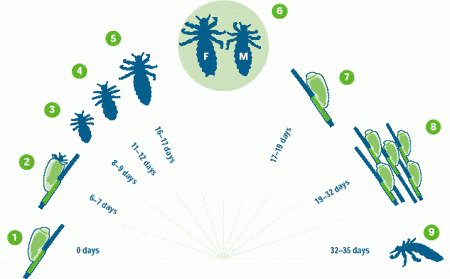Head Lice
Head Lice.
There have been some isolated cases of head lice that have been reported to our school, so now is a good time to check your students head for any sign of them.
About Head Lice
Head lice have been around for many thousands of years. Anyone can get head lice and given the chance head lice move from head to head without discrimination.
- Head lice are small, wingless, blood sucking insects.
- Their colour varies from whitish-brown to reddish-brown.
- People get head lice from direct hair to hair contact with another person who has head lice.
- Head lice do not have wings or jumping legs so they cannot fly or jump from head to head. They can only crawl.
Finding Head Lice
Lice can crawl and hide. The easiest and most effective way to find them is to follow these steps:
Step 1. Comb any type of hair conditioner on to dry, brushed (detangled) hair. This stuns the lice and makes it difficult for them to grip the hair or crawl around.
Step 2. Now comb sections of the hair with a fine tooth, head lice comb.
Step 3. Wipe the conditioner from the comb onto a paper towel or tissue.
Step 4. Look on the tissue and on the comb for lice and eggs.
Step 5. Repeat the combing for every part of the head at least 4 or 5 times
If lice or eggs are found, the child's hair should be treated.
Head lice eggs are small (the size of a pinhead) and oval. A live egg will 'pop' when squashed between fingernails.
Life Cycle of Head Lice

- Egg is laid on hair shaft. Egg is called a nit.
- Louse emerges after six to seven days.
- First moult two days after hatching.
- Second moult 5 days after hatching.
- Third moult 10 days after hatching.
- Emerging from their third moult as adult lice, the female and slightly similar male begin to reproduce.
- Female lays first egg one or two days after mating.
- Female can lay approximately three to eight eggs per day for the next 16 days.
- Having lived 32 to 35 days the louse dies.
Treating Head Lice
- Concentrate on the head - there is no evidence that you need to clean the house or classroom.
- No treatment kills all of the eggs so treatment must involve two applications seven days apart.
- If you are using lotions, apply the product to dry hair.
- There is no need to treat the whole family, unless they also have head lice.
- Only the pillowcase requires specific laundering; either wash it in hot water (at least 60 degrees centigrade) or dry it using a clothes dryer on the hot or warm setting.
- There is no product available that prevents head lice. Using the conditioner and comb method once a week will help you detect any head lice early and minimise the problem. Tying back long hair can help prevent the spread of head lice.
- Combs with long, rounded stainless steel teeth positioned very close together have been shown to be the most effective, however, any head lice comb can be use.




